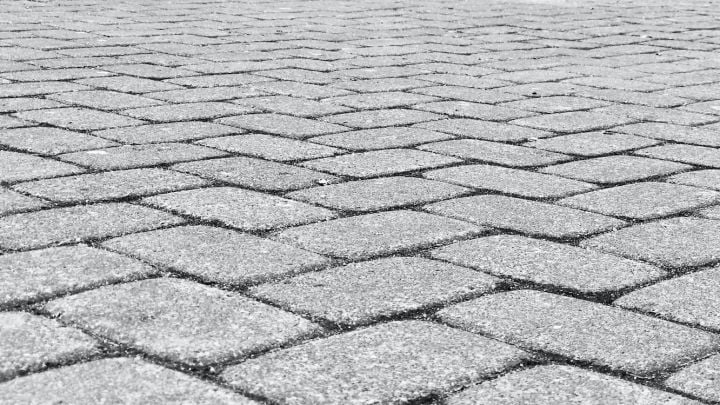
Does your driveway seem like it’s shrinking as your car collection grows? Are you tired of squeezing between parked vehicles and worrying about scratches and bumps?
We totally get it! Dealing with a crowded driveway can be a real hassle. This article will walk you through the step-by-step guide to extending your driveway using simple paving and bricklaying techniques.
Choosing Between Paving and Bricklaying
Deciding between paving and bricklaying for your driveway extension can be a tough choice. Here are some factors to consider to help you make an informed decision:
- Budget: Consider your budget for the project. Paving materials like concrete tend to be more cost-effective compared to bricks. If you have a slightly higher budget and desire a classic and elegant look, bricklaying may be worth the investment.
- Aesthetic Appeal: Think about the overall aesthetic you want to achieve. Paving offers a range of options, from sleek and modern to textured and traditional. Bricklaying provides a timeless charm and rustic beauty that adds character to your driveway.
- Durability: Pavers are known for their durability. They can withstand heavy loads, resist cracking, and endure various weather conditions. Bricks are also durable, particularly clay bricks known for their strength and longevity.
- Maintenance: Both pavers and bricks are considered low-maintenance options for driveways. Regular maintenance involves simple tasks such as sweeping or rinsing off debris, removing weeds or moss, and occasional resealing to enhance their appearance and protect against stains.
Preparing the Ground
Before you begin extending your driveway with either paving or bricklaying, proper preparation of the ground is crucial. The preparation process is similar for both options and involves the following steps:
- Clearing Debris: Start by clearing the area of any vegetation, rocks, or debris that may obstruct the installation process.
- Marking the Area: Use stakes or markers to outline the boundaries of your driveway extension. This will help you visualize the area and ensure that the installation stays within the desired parameters.
- Digging the Ground: Use a shovel or a garden spade to dig out the soil within the marked boundaries. Start from one end and work your way across, removing the soil to the desired depth.
- Leveling the Ground: Once you have excavated the ground, it’s important to make sure the surface is level and even. This means smoothing out any bumps or uneven areas to create a flat base for your driveway extension. Also, ensure proper elevation to allow proper drainage. You can calculate elevation by using a percent grade calculator.
- Adding the Base Material: For paving, the common choice for base material is crushed stone. Crushed stones provide a strong and stable foundation that can withstand the weight of vehicles. The base material assists in proper drainage, allowing water to flow away from the driveway. For bricklaying, gravel is typically used as the base material. Gravel offers excellent stability and support for the bricks, ensuring that they remain in place and resist shifting over time.
Extending the Driveway with Paving
Choosing the Paving Material
There are a variety of options available, including concrete, cobblestone, and marble pavers. Consider factors such as durability, color, texture, and style when selecting the paving material.
Installing Edge Restraints
After laying crushed stones, instal edge restraints along the driveway boundary, such as concrete curbs or plastic or metal edging. A curb ramp can also be used for the end as well, giving your vehicles an easier entry. They help keep the paving stones in place and prevent them from shifting.
Laying Pavers
Begin laying the pavers from one corner of the driveway extension area. This will provide a starting point and help maintain a consistent pattern throughout the installation process.
Filling the Joints
Once the pavers are in place, fill the joints between them with fine sand or polymeric sand. This helps to stabilize the stones and prevent weed growth. Apply a sealant to protect the paving and increase its lifespan.
Extending the Driveway with Bricklaying
Choosing the Right Bricks
Select bricks that are suitable for outdoor use and can withstand the weight of vehicles. Common choices include clay bricks and concrete bricks. Consider color and texture to ensure they complement your home’s style.
Installing Edge Restraints
Install edge restraints, such as concrete curbs or metal or plastic edging, same as in paving.
Mixing Mortar
Prepare mortar by combining cement, sand, and water according to the instructions. Aim for a thick consistency that allows the mortar to hold the bricks together.
Laying the Bricks
Start at one end of the driveway extension and lay the bricks in your desired pattern. Apply mortar to the base and sides of each brick, firmly placing it on the prepared surface. Use a level to ensure the bricks are even and aligned correctly. Continue this process, working your way across the driveway extension.
Cutting Bricks
If needed, use a masonry saw to cut bricks to fit along the edges or around curves. Take precise measurements and make clean cuts for a proper fit.
Finishing Touches
Once all the bricks are in place, remove any excess mortar and clean the surface. Allow the mortar to dry for the recommended time. Consider applying a brick sealant or protective coating. It acts as a barrier, shielding the bricks from moisture, stains, and fading caused by weather conditions.
Key Takeaways
Extending your driveway using paving and bricklaying techniques can provide a practical solution for your growing parking needs.
When deciding between paving or bricklaying, consider factors such as budget, aesthetic appeal, durability, and maintenance.
Here’s how you can extend your driveway with paving:
- Add a base material, such as crushed stone, to create a stable foundation for the pavers.
- Install edge restraints, such as concrete curbs or plastic/metal edging, to secure the pavers in place.
- Start laying the pavers from one corner of the driveway extension.
- Fill the joints between the pavers with fine sand or polymeric sand to stabilize the stones and prevent weed growth.
- Apply a sealant to protect the paving.
Here’s how you can extend your driveway with bricklaying:
- Add gravel as a base material to provide stability and support for the bricks.
- Install edge restraints to ensure the bricks don’t shift.
- Begin laying the bricks from one end of the driveway extension, applying mortar to the base and sides of each brick.
- Use a masonry saw to cut bricks for edges or curves.
We hope you found this blog post on How to Extend Your Driveway: Paving and Bricklaying 101, useful. Be sure to check out our post on Make a Beautiful Design with Great Looking Floors for more great tips!
Have Experience in the Moving Industry? Want an Additional Income Stream? Work With All Around Moving!
All Around Moving Services Company makes it easy to get started as a moving consultant. Click here to learn more.






